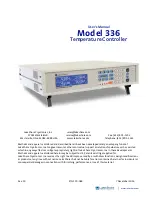
TC1796
Peripheral Units (Vol. 2 of 2)
General Purpose Timer Array (GPTA)
User’s Manual
24-84
V2.0, 2007-07
GPTA, V2.0
Various clocking modes of the LTC63 copy function are possible, depending on the
source selected for the input line by the input multiplexer (see
).
When bit LTCCTR63.OSM is set to 1, a self-disable is executed after each copy event
(PWM is not affected). The current state of the LTC copy enable may be evaluated by
reading the control register flag bit LTCCTR63.CEN.
The output can be switched immediately to 0 or 1 in any pulse modulation mode by
writing 0000
H
or FFFF
H
to the duty cycle compare register LTCXR63.X.
LTC63 Service Request
The service request SQT63 can be generated by one of the following events:
•
Comparator output changes from 1 to 0 (this makes sense mainly for standard
PWM),
•
Copy event.
Bit combinations 01
B
and 10
B
of bit field LTCCTR63.REN selects one of the two service
request sources and enables it. Output SQT63 becomes active in these two cases. With
Table 24-6
LTC63 Data Input Line Operation
Input Source
Level Sensitive Input Line
Edge Sensitive Input Line
External Signal
(Port line)
The external signal operates as
gating signal for the cell. If the input
is high the copy function of the LTC
cell is performed with each rising
edge of the GPTA module clock
f
GPTA
.
The copy function of the LTC
cell is performed on selected
edge(s).
Internal Clock
Bus Line or
PDL output or
INT input
The copy function is performed with
the internal clock or PDL/INT signal.
The copy function of the LTC
cell is performed on selected
edge(s).
In case of full speed GPTA
module clock selection, the
Level Sensitive Mode must be
selected. The Edge Sensitive
Mode will not produce an event
in this special case.
GTC output
The GTC output signal operates as
gating signal for the cell. If the input
is high the copy function of the LTC
cell is performed with each rising
edge of the GPTA module clock
f
GPTA
.
The copy function of the LTC
cell is performed on selected
edge(s).
















































